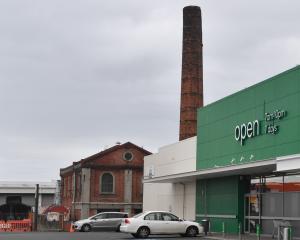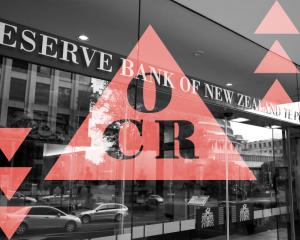United States president-elect Donald Trump financial and trade policies could have unintended side effects for New Zealand exporters, Craigs Investment Partners broker Peter McIntyre said yesterday.

New Zealand companies which manufactured in low-income economies such as Mexico could be forced to move some of their operations home, he said in an interview.
Almost all Federal Reserve policymakers believed the US economy would grow faster under the Trump administration because of fiscal stimulus.
Many were looking at an increased pace of interest rate increases. The Fed minutes, released earlier this week, showed how broadly views within the Fed were shifting in response to Mr Trump’s promises of tax cuts, infrastructure spending and deregulation.
Mr McIntyre said trade barriers were also a part of Mr Trump’s election platform of "making America great again".
Mr Trump yesterday targeted Toyota Motor Corp, threatening to impose a hefty fee on the world’s largest vehicle maker if it built its Corolla cars for the US market at a plant in Mexico.
"Toyota Motor said will build a new plant in Baja, Mexico, to build Corolla cars for US NO WAY! Build plant in US or pay big border tax," Mr Trump tweeted.
It was Mr Trump’s latest broadside against car makers building vehicles in Mexico and first against a foreign maker. The president-elect’s attacks on investments by companies in Mexico have cast a shadow over cross-border production networks central to more than $US583billion ($NZ831billion) a year in trade between the two countries.
Fonterra was not at risk from Mr Trump’s trade policies but Fisher & Paykel Healthcare, which manufactured products in Mexico, was, Mr McIntyre said.
"If that’s the case, F&P Healthcare will use its New Zealand base to export into the US. It will then be selling goods from New Zealand, which is very positive. It may also encourage others who manufacture offshore to come back to home base."
The overall effects on exports would not be evident immediately. Three years was a likely timetable to gauge how Mr Trump’s policies were working.
Mr McIntyre said the prospect of two interest rate cuts in the US would help lift the value of the US currency and, theoretically, lower the value of the New Zealand dollar.
That would help companies such as Dunedin’s Scott Technology, which would use the weaker currency to its advantage in overseas markets.
Air New Zealand, which needed to hedge currency, particularly around fuel purchases, would feel the effects of a lower kiwi through higher costs, he said.
However, tourist numbers should grow because the US dollar would buy more in New Zealand if the kiwi was low.
Global currencies were trading against the trend yesterday. The US dollar fell to a three-week low after inflation and unemployment data failed to reverse a downward trend.
Investors shook off promising data on the US economy, including jobless claims falling to a 43-year low last week, Mr McIntyre said.
Once US interest rates and inflation started to rise, the US currency would also increase in value.
"The world needs some inflation to stop the downward spiral of deflation we have had for the last five or so years."
The European Central Bank was still pouring money into the euro zone in an effort to stimulate the economy, and the region still had negative interest rates.
Interest rates were not as in negative territory as they had been because of the US rates rising.
After Brexit, it was likely one or more other countries would leave the EU within the following 12 to 18 months, he said.












